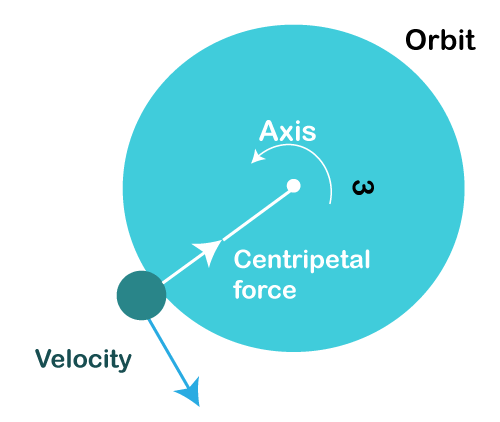Definitions
Definitions 2
Centripetal Force DefinitionA net force that keeps an object moving in a circular motion is known as a centripetal force. Each object moving at velocity v along a circle of radius r suffers an acceleration directed toward the path's centre. The force that propels an item in a circular motion is known as the centripetal force, which is not fundamental. According to Newton's first law, an object will continue to move in a straight path unless acted upon by an outside force. The centripetal force is the outside force in this situation. The Centripetal Force Formula states that the centripetal force is the product of mass (in kg) and tangential velocity (in metres per second) squared, divided by the radius (in metres). This formula predicts that the centripetal force will double with a doubling of tangential velocity. Examples of centripetal forces include the tension force in a swinging tethered ball's thread and the gravitational pull that keeps a spacecraft in orbit. Even more, forces can be present as long as they all contribute to a net force directed towards the centre of the circular path (by adding their vector summations). 
The force is applied in the direction of the object's motion's centre or the osculating circle (the circle that best fits the local path of the object if the path is not circular). As speed is squared in the formula, doubling the speed requires four times the force. The radius of curvature's inverse relationship with the force demonstrates that the force is proportional to the square of the radial distance. Another way to express this force is to use the object's rotational velocity, which is correlated with the tangential velocity. Because the velocity in particle accelerators can approach the speed of light in a vacuum, the same rest mass now exerts more inertia (relativistic mass), requiring more effort to achieve the same centripetal acceleration. Daily Life Examples
Difference between Centripetal and Centrifugal Force
Next TopicChemical Change Definition
|
 For Videos Join Our Youtube Channel: Join Now
For Videos Join Our Youtube Channel: Join Now
Feedback
- Send your Feedback to [email protected]
Help Others, Please Share










